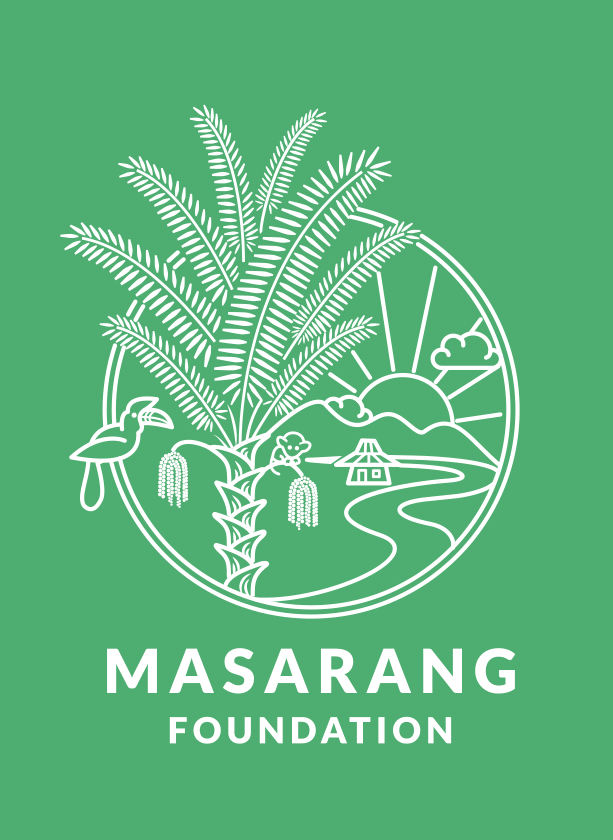Thanks to funding received from the Regional Environment Office of the United States Embassy, the Masarang Foundation has been able to develop another new nursery at the Tasikoki Wildlife Rescue Centre.
The seedlings produced here will add extra capacity and mainly be used for forest restoration efforts in the coastal areas of North Sulawesi where the Masarang Foundation is active. The main nurseries in and around Tomohon will continue to serve the projects in the highlands and providing sugar palm seedlings to other projects in Indonesia. Specific advantages to producing seedlings at a farm or sanctuary include access to rich composting from the animal waste.

Tree nursery built at Tasikoki under the funding from US Embassy

Other organic waste from wildlife enclosures is composted (left) and taken as part of the potting mix (right)
Waste wood from enclosures (perching, etc) is also converted to biochar with a small retort and mixed with water and organic compost to provide a potent potting mix. The philosophy is to maintain permaculture techniques, using organic methods and striving to reduce and reuse waste.

Waste wood is “cooked” in the retort (left) to produce biochar as one more component of the potting mix (right)
The roof of the potting workshop and germination room is designed to capture rainwater that can be stored for watering the seedlings in drier times. The frame work was built from timber claimed from fallen trees (mainly coconut) on-site at Tasikoki. The new nursery takes over previous small scale seedling production at Tasikoki and serves several functions;
– Nursery for native forest restoration and sustainable agriculture projects
Seedling production capacity of 10,000-20,000 / year
Community training and education facility with demonstration plots
Potting mix and organic fertiliser from composting organic waste from captive wildlife and biochar from recycling perching from enclosures
– Native Forest Restoration:
Enriching the Tasikoki forest with natural and organic foods for wildlife under rehabilitation on site. Enriching and restoring potential release sites for native species.
– Sustainable Agriculture Projects:
Community development and FLR at coastal ecology projects (under this grant)
Wildlife / forest bufferzone projects for local farmers to reduce wildlife crop-raiding issues
Permaculture food production for the Visitor & Education Centre
Medicinal plants for traditional healthcare education project
Almost 10,000 seedlings are already under production and the nursery has capacity for almost double more in a year. We are already enjoying the first tomatoes grown on-site and have also replanted the whole kitchen-garden at the lodge to provide fresh herbs and leafy vegetables for the lodge.
Tasikoki is still seeking funds to cover the operation costs of the seedling production and restoration work for the coming year in the region of Rp10 million per month (approximately EUR 8,000 / year).
The current El Niño is extending North Sulawesi’s dry season again for a second year. It is hoped that planting for the forest restoration work can continue starting in early November through to December. Drought is a serious concern and we are also seeking funds to create more rainwater catchment reservoirs on site and at our forest restoration sites.
Additional soil restoration, swale digging and grass mitigation work is planned for October and planting of 1,000 + trees at this site planned for November-December 2015. A further site one hour further south has been identified for similar restoration work that also combines with our sea turtle protection activities.

Part of the area where almost 2,000 Gliricidia sepium cuttings were planted to help supress the grass, restore the soils and provide shade for the agroforestry seedlings. After a few weeks (left). After 7 months (Right).
Later these trees can be coppiced as animal fodder.
